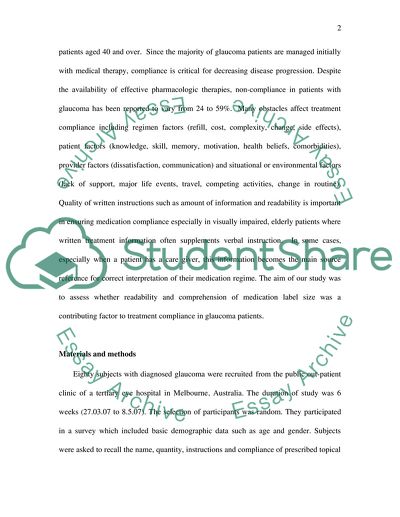Cite this document
(Medication Compliance in Glaucoma Assignment Example | Topics and Well Written Essays - 2349 words, n.d.)
Medication Compliance in Glaucoma Assignment Example | Topics and Well Written Essays - 2349 words. Retrieved from https://studentshare.org/health-sciences-medicine/1541415-glaucoma-label-study
Medication Compliance in Glaucoma Assignment Example | Topics and Well Written Essays - 2349 words. Retrieved from https://studentshare.org/health-sciences-medicine/1541415-glaucoma-label-study
(Medication Compliance in Glaucoma Assignment Example | Topics and Well Written Essays - 2349 Words)
Medication Compliance in Glaucoma Assignment Example | Topics and Well Written Essays - 2349 Words. https://studentshare.org/health-sciences-medicine/1541415-glaucoma-label-study.
Medication Compliance in Glaucoma Assignment Example | Topics and Well Written Essays - 2349 Words. https://studentshare.org/health-sciences-medicine/1541415-glaucoma-label-study.
“Medication Compliance in Glaucoma Assignment Example | Topics and Well Written Essays - 2349 Words”, n.d. https://studentshare.org/health-sciences-medicine/1541415-glaucoma-label-study.


